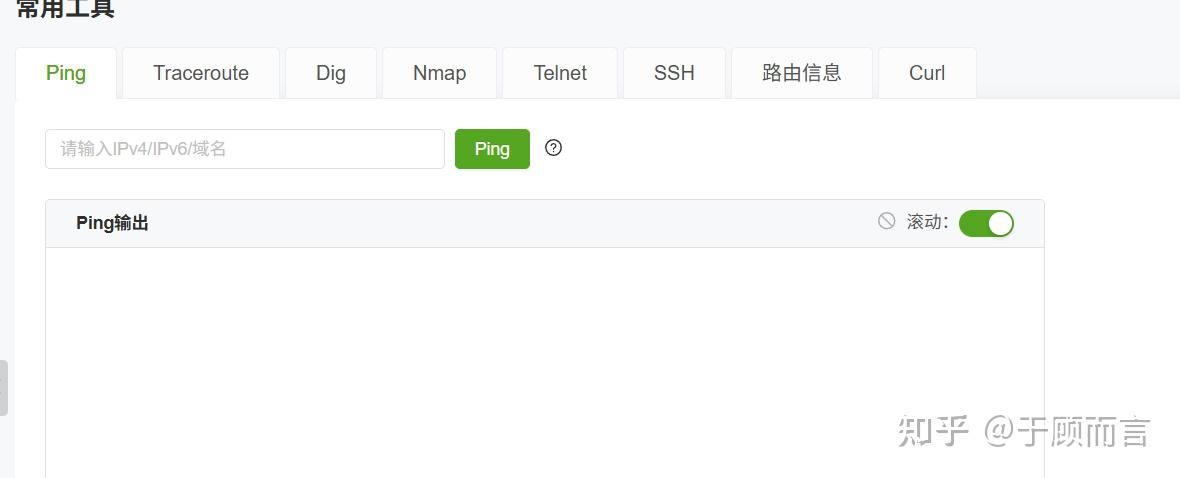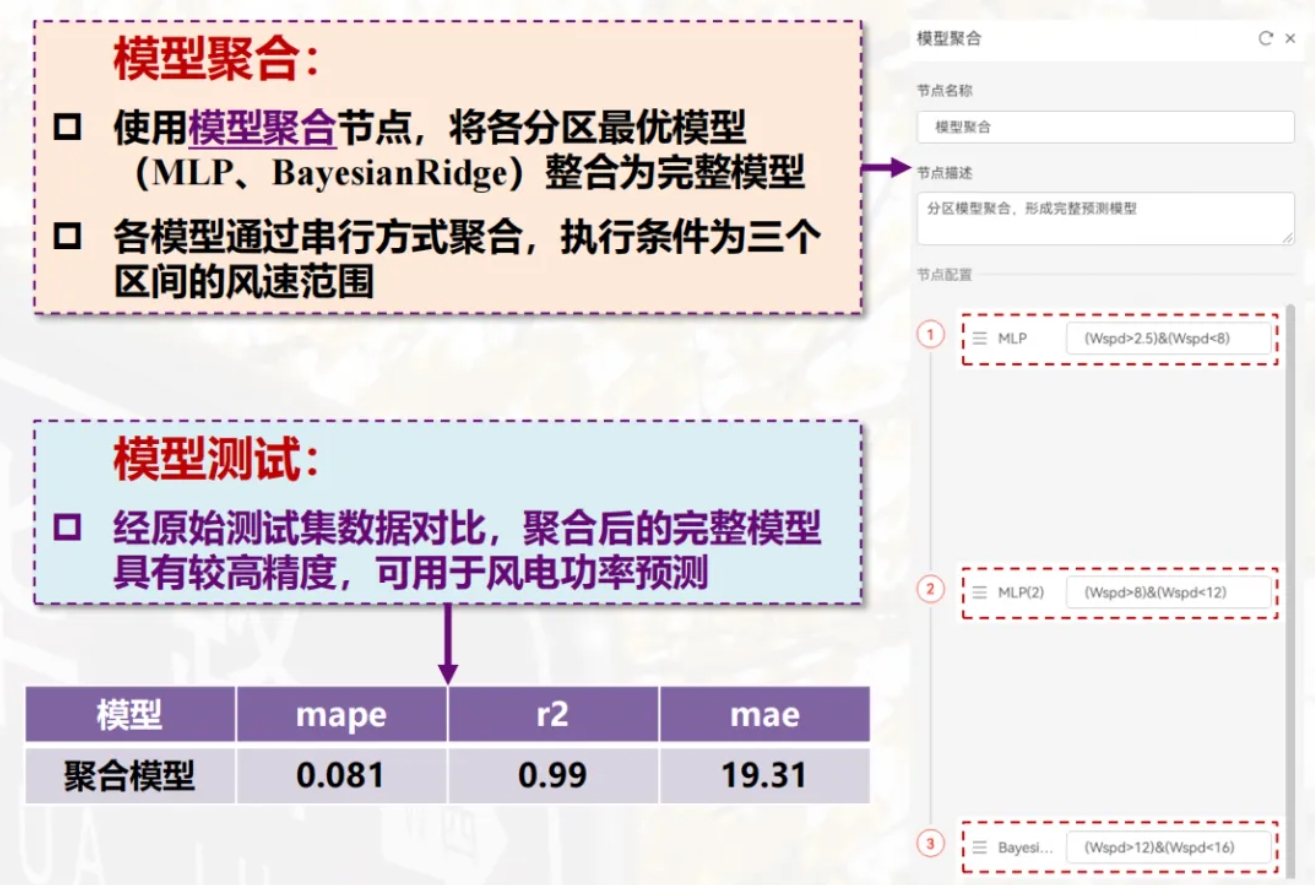Ubuntu部署ktransformers
准备工作
一台服务器
CPU:500G
GPU:48G(NVIDIA4090)
系统:Ubuntu20.04(github的文档好像用的是22.04)
第一步:下载权重文件
1.下载hfd
wget https://hf-mirror.com/hfd/hfd.shchmod a+x hfd.sh2.设置环境变量
export HF_ENDPOINT=https://hf-mirror.com3.下载模型(需要梯子,需要带上huggingface的token)
./hfd.sh gpt24.下载数据集(需要梯子,需要带上huggingface的token)
./hfd.sh wikitext --dataset5.下载大文件(需要梯子,文件很大,大约四五百G)
./hfd.sh unsloth/DeepSeek-R1-GGUF --include DeepSeek-R1-Q4_K_M/*第二步:拉代码,编译代码
1.使用Anaconda3安装Python3.11
conda create --name ktransformers python=3.11
conda activate ktransformers
conda install -c conda-forge libstdcxx-ng2.安装其他依赖
pip3 install torch torchvision torchaudio --index-url https://download.pytorch.org/whl/cu126pip3 install packaging ninja cpufeature numpy
sudo add-apt-repository ppa: ubuntu-toolchain-r/test
sudo apt-get updatesudo apt-get install --only-upgrade libstdc++6pip install flash-attn --no-build-isolation3.查看显卡版本及cuda版本
以下两条指令显示的CUDA版本需要一致,若不一致,系统会以nvcc --version的为准
nvcc --version
nvidia-smi
4.拉代码
git clone https://github.com/kvcache-ai/ktransformers.git
cd ktransformers
git submodule init
git submodule update
5.编译
export USE_NUMA=1
make dev_install
第三部:运行
python ktransformers/local_chat.py --model_path deepseek-ai/DeepSeek-R1 --gguf_path /home/dpkj/deepseek/DeepSeek-R1-GGUF/DeepSeek-R1-Q4_K_M/ --cpu_infer 50 --cache_lens 1536 --max_new_tokens 8192
# --model_path:模型位置,不需要修改
# --gguf_path:前面下载的大文件,模型文件位置,按照实际情况而定
# --cpu_infer:CPU占用,单位百分比,如果服务器不死DDR5双路CPU,可以适量调低此占比
其他启动参数
python -m transformers.local_chat --model_path deepseek-ai/DeepSeek-R1 --gguf_path /root/DeepSeek-R1-GGUF/DeepSeek-R1-Q4_K_M/ --cpu_infer 53 --cache_lens 1536
python ./transformers/local_chat.py --model_path deepseek-ai/DeepSeek-R1 --gguf_path /home/shadeform/DeepSeek-R1-GGUF/DeepSeek-R1-Q4 K M/ --cpu_infer 53 --cache_lens 1536 --optimize_config_path transformers/optimize/optimize_rules/DeepSeek-V3-Chat-multi-gpu-marlin.yaml
python -m transformers.local_chat --model_path deepseek-ai/DeepSeek-R1 --gguf_path /root/autodi-tmp/DeepSeek-R1-GGUF/DeepSeek-R1-Q4 K M/ --cpu_infer 128 --cache_lens 1536 --max_new_tokens 8192 --optimize_config_path ./transformers/optimize/optimize_rules/DeepSeek-V3-Chat-multi-gpu-marlin-4.yaml
transformers --model_path deepseek-ai/DeepSeek-R1 --gguf_path /root/autodi-tmp/DeepSeek-R1-GGUF/DeepSeek-R1-Q4 K M/ --cpu_infer 65 --cache_lens 1536 --max_new_tokens 8192 --port 6006 --optimize_config_path /transformers/optimize/optimize_rules/DeepSeek-V3-Chat-multi-gpu-marlin-4.yaml
curl -X 'POST"
"http://localhost:6006/v1/chat/completions'\
-H 'accept: application/json' \
-H 'Content-Type: application/json' \
-d'{
"messages": [
"content": "tell a joke",
"role": "user"
],
"model": "ktranformers-model",
"stream": true
}'
外传
1. 使用API方式调用
新建文件:chat_openai.py
import argparse
import uvicorn
from typing import List, Dict, Optional, Any
from fastapi import FastAPI, HTTPException, status
from fastapi.middleware.cors import CORSMiddleware
from pydantic import BaseModel
import os
import sys
import time
from fastapi import Request
from fastapi.responses import StreamingResponse, JSONResponse
import json
import logging# 设置日志记录
logging.basicConfig(level=logging.INFO)
logger = logging.getLogger(__name__)project_dir = os.path.dirname(os.path.dirname(__file__))
sys.path.insert(0, project_dir)
import torch
from transformers import (
AutoTokenizer,
AutoConfig,
AutoModelForCausalLM,
GenerationConfig,
TextStreamer,
)
from ktransformers.optimize.optimize import optimize_and_load_gguf
from ktransformers.models.modeling_deepseek import DeepseekV2ForCausalLM
from ktransformers.models.modeling_qwen2_moe import Qwen2MoeForCausalLM
from ktransformers.models.modeling_deepseek_v3 import DeepseekV3ForCausalLM
from ktransformers.models.modeling_llama import LlamaForCausalLM
from ktransformers.models.modeling_mixtral import MixtralForCausalLM
from ktransformers.util.utils import prefill_and_generate
from ktransformers.server.config.config import Configcustom_models = {
"DeepseekV2ForCausalLM": DeepseekV2ForCausalLM,
"DeepseekV3ForCausalLM": DeepseekV3ForCausalLM,
"Qwen2MoeForCausalLM": Qwen2MoeForCausalLM,
"LlamaForCausalLM": LlamaForCausalLM,
"MixtralForCausalLM": MixtralForCausalLM,
}ktransformer_rules_dir = os.path.join(os.path.dirname(os.path.abspath(__file__)), "optimize", "optimize_rules")
default_optimize_rules = {
"DeepseekV2ForCausalLM": os.path.join(ktransformer_rules_dir, "DeepSeek-V2-Chat.yaml"),
"DeepseekV3ForCausalLM": os.path.join(ktransformer_rules_dir, "DeepSeek-V3-Chat.yaml"),
"Qwen2MoeForCausalLM": os.path.join(ktransformer_rules_dir, "Qwen2-57B-A14B-Instruct.yaml"),
"LlamaForCausalLM": os.path.join(ktransformer_rules_dir, "Internlm2_5-7b-Chat-1m.yaml"),
"MixtralForCausalLM": os.path.join(ktransformer_rules_dir, "Mixtral.yaml"),
}# 全局变量,存储初始化后的模型
chat_model = Noneclass OpenAIChat:
def __init__(
self,
model_path: str,
optimize_rule_path: str = None,
gguf_path: str = None,
cpu_infer: int = Config().cpu_infer,
use_cuda_graph: bool = True,
mode: str = "normal",
):
torch.set_grad_enabled(False)
Config().cpu_infer = cpu_inferself.tokenizer = AutoTokenizer.from_pretrained(model_path, trust_remote_code=True)
config = AutoConfig.from_pretrained(model_path, trust_remote_code=True)
self.streamer = TextStreamer(self.tokenizer, skip_prompt=True) if not Config().cpu_infer else None
if mode == 'long_context':
assert config.architectures[0] == "LlamaForCausalLM", "Only LlamaForCausalLM supports long_context mode"
torch.set_default_dtype(torch.float16)
else:
torch.set_default_dtype(config.torch_dtype)with torch.device("meta"):
if config.architectures[0] in custom_models:
if "Qwen2Moe" in config.architectures[0]:
config._attn_implementation = "flash_attention_2"
if "Llama" in config.architectures[0]:
config._attn_implementation = "eager"
if "Mixtral" in config.architectures[0]:
config._attn_implementation = "flash_attention_2"
model = custom_models[config.architectures[0]](config)
else:
model = AutoModelForCausalLM.from_config(
config, trust_remote_code=True, attn_implementation="flash_attention_2"
)if optimize_rule_path is None:
if config.architectures[0] in default_optimize_rules:
optimize_rule_path = default_optimize_rules[config.architectures[0]]optimize_and_load_gguf(model, optimize_rule_path, gguf_path, config)
try:
model.generation_config = GenerationConfig.from_pretrained(model_path)
except:
model.generation_config = GenerationConfig(
max_length=128,
temperature=0.7,
top_p=0.9,
do_sample=True
)
if model.generation_config.pad_token_id is None:
model.generation_config.pad_token_id = model.generation_config.eos_token_id
model.eval()
self.model = model
self.use_cuda_graph = use_cuda_graph
self.mode = mode
logger.info("Model loaded successfully!")def create_chat_completion(
self,
messages: List[Dict[str, str]],
temperature: float = 0.7,
max_tokens: int = 1000,
top_p: float = 0.9,
force_think: bool = False,
) -> Dict:
input_tensor = self.tokenizer.apply_chat_template(
messages, add_generation_prompt=True, return_tensors="pt"
)
if force_think:
token_thinks = torch.tensor([self.tokenizer.encode("<think>\\n", add_special_tokens=False)],
device=input_tensor.device)
input_tensor = torch.cat([input_tensor, token_thinks], dim=1)generation_config = GenerationConfig(
temperature=temperature,
top_p=top_p,
max_new_tokens=max_tokens,
do_sample=True # Ensure do_sample is True if using temperature or top_p
)generated = prefill_and_generate(
self.model,
self.tokenizer,
input_tensor.cuda(),
max_tokens,
self.use_cuda_graph,
self.mode,
force_think
)# Convert token IDs to text
generated_text = self.tokenizer.decode(generated, skip_special_tokens=True)return {
"choices": [{
"message": {
"role": "assistant",
"content": generated_text
}
}],
"usage": {
"prompt_tokens": input_tensor.shape[1],
"completion_tokens": len(generated),
"total_tokens": input_tensor.shape[1] + len(generated)
}
}class ChatMessage(BaseModel):
role: str
content: strclass ChatCompletionRequest(BaseModel):
messages: List[ChatMessage] # 确保 messages 是 Pydantic 模型实例的列表
model: str = "default-model"
temperature: Optional[float] = 0.7
top_p: Optional[float] = 0.9
max_tokens: Optional[int] = 1000
stream: Optional[bool] = False
force_think: Optional[bool] = Trueclass ChatCompletionResponse(BaseModel):
id: str = "chatcmpl-default"
object: str = "chat.completion"
created: int = 0
model: str = "default-model"
choices: List[Dict[str, Any]]
usage: Dict[str, int]app = FastAPI(title="KVCache.AI API Server")
@app.get("/health")
async def health_check():
return {"status": "healthy"}@app.middleware("http")
async def add_process_time_header(request: Request, call_next):
start_time = time.time()
response = await call_next(request)
process_time = time.time() - start_time
response.headers["X-Process-Time"] = f"{process_time:.4f}s"
return responseapp.add_middleware(
CORSMiddleware,
allow_origins=["*"],
allow_credentials=True,
allow_methods=["*"],
allow_headers=["*"],
)@app.post("/v1/chat/completions", response_model=ChatCompletionResponse)
async def chat_completion(request: ChatCompletionRequest):
try:
# 如果 messages 是 Pydantic 模型实例列表,使用 model_dump
messages = [m.model_dump() for m in request.messages]
response = chat_model.create_chat_completion(
messages=messages,
temperature=request.temperature,
max_tokens=request.max_tokens,
top_p=request.top_p,
force_think=request.force_think
)return {
"id": f"chatcmpl-{int(time.time())}",
"object": "chat.completion",
"created": int(time.time()),
"model": request.model,
"choices": [{
"index": 0,
"message": {
"role": "assistant",
"content": response['choices'][0]['message']['content']
},
"finish_reason": "stop"
}],
"usage": response['usage']
}
except Exception as e:
logger.error(f"API Error: {str(e)}")
raise HTTPException(
status_code=status.HTTP_500_INTERNAL_SERVER_ERROR,
detail=f"Internal server error: {str(e)}"
)def create_app(model_path: str, gguf_path: str, cpu_infer:int, optimize_rule_path: Optional[str] = None):
global chat_model
chat_model = OpenAIChat(
model_path=model_path,
gguf_path=gguf_path,
optimize_rule_path=optimize_rule_path,
cpu_infer=cpu_infer
)
return appdef main():
parser = argparse.ArgumentParser(description="KVCache.AI API Server")
parser.add_argument("--model_path", type=str, required=True, help="HuggingFace模型路径")
parser.add_argument("--gguf_path", type=str, required=True, help="GGUF模型文件路径")
parser.add_argument("--optimize_rule_path", type=str, help="优化规则文件路径")
parser.add_argument("--port", type=int, default=8000, help="服务端口号")
parser.add_argument("--cpu_infer", type=int, default=10, help="使用cpu数量")
parser.add_argument("--host", type=str, default="0.0.0.0", help="绑定地址")
args = parser.parse_args()create_app(
model_path=args.model_path,
gguf_path=args.gguf_path,
optimize_rule_path=args.optimize_rule_path,
cpu_infer=args.cpu_infer
)uvicorn.run(
app,
host=args.host,
port=args.port,
loop="uvloop",
http="httptools",
timeout_keep_alive=300,
log_level="info",
access_log=False
)if __name__ == "__main__":
main()
文件防止位置:

安装依赖:
pip install protobuf uvicorn httptools
pip install uvloop启动:
python ktransformers/chat_openai.py --model_path deepseek-ai/DeepSeek-R1 --gguf_path /home/dpkj/deepseek/DeepSeek-R1-GGUF/DeepSeek-R1-Q4_K_M/
2.使用open-WEBUI进行可视化对接
# 使用Pip下载OPEN-WEBUI
pip install open-webui# 下载完成后开启服务open-webui serve





import os
import json
import requests
from pydantic import BaseModel, Field
from typing import List, Union, Iterator# Set DEBUG to True to enable detailed logging
DEBUG = False
class Pipe:
class Valves(BaseModel):
openai_API_KEY: str = Field(default="none") # Optional API key if needed
DEFAULT_MODEL: str = Field(default="DeepSeek-R1") # Default model identifierdef __init__(self):
self.id = "DeepSeek-R1"
self.type = "manifold"
self.name = "KT: "
self.valves = self.Valves(
**{
"openai_API_KEY": os.getenv("openai_API_KEY", "none"),
"DEFAULT_MODEL": os.getenv("openai_DEFAULT_MODEL", "DeepSeek-R1"),
}
)
# Self-hosted FastAPI server details
self.api_url = (
"http://localhost:8000/v1/chat/completions" # FastAPI server endpoint
)
self.headers = {"Content-Type": "application/json"}def get_openai_models(self):
"""Return available models - for openai we'll return a fixed list"""
return [{"id": "KT", "name": "DeepSeek-R1"}]def pipes(self) -> List[dict]:
return self.get_openai_models()def pipe(self, body: dict) -> Union[str, Iterator[str]]:
try:
# Use default model ID since OpenAI has a single endpoint
model_id = self.valves.DEFAULT_MODEL
messages = []# Process messages including system, user, and assistant messages
for message in body["messages"]:
if isinstance(message.get("content"), list):
# For OpenAI, we'll join multiple content parts into a single text
text_parts = []
for content in message["content"]:
if content["type"] == "text":
text_parts.append(content["text"])
elif content["type"] == "image_url":
# OpenAI might not support image inputs - add a note about the image
text_parts.append(f"[Image: {content['image_url']['url']}]")
messages.append(
{"role": message["role"], "content": "".join(text_parts)}
)
else:
# Handle simple text messages
messages.append(
{"role": message["role"], "content": message["content"]}
)if DEBUG:
print("FastAPI API request:")
print(" Model:", model_id)
print(" Messages:", json.dumps(messages, indent=2))# Prepare the API call parameters
payload = {
"model": model_id,
"messages": messages,
"temperature": body.get("temperature", 0.7),
"top_p": body.get("top_p", 0.9),
"max_tokens": body.get("max_tokens", 8192),
"stream": body.get("stream", True),
}# Add stop sequences if provided
if body.get("stop"):
payload["stop"] = body["stop"]# Sending request to local FastAPI server
if body.get("stream", False):
# Streaming response
def stream_generator():
try:
response = requests.post(
self.api_url,
json=payload,
headers=self.headers,
stream=True,
)
for line in response.iter_lines():
if line:
yield line.decode("utf-8")
except Exception as e:
if DEBUG:
print(f"Streaming error: {e}")
yield f"Error during streaming: {str(e)}"return stream_generator()
else:
# Regular response
response = requests.post(
self.api_url, json=payload, headers=self.headers
)
if response.status_code == 200:
generated_content = (
response.json()
.get("choices", [{}])[0]
.get("message", {})
.get("content", "")
)
return generated_content
else:
return f"Error: {response.status_code}, {response.text}"
except Exception as e:
if DEBUG:
print(f"Error in pipe method: {e}")
return f"Error: {e}"def health_check(self) -> bool:
"""Check if the OpenAI API (local FastAPI service) is accessible"""
try:
# Simple health check with a basic prompt
response = requests.post(
self.api_url,
json={
"model": self.valves.DEFAULT_MODEL,
"messages": [{"role": "user", "content": "Hello"}],
"max_tokens": 5,
},
headers=self.headers,
)
return response.status_code == 200
except Exception as e:
if DEBUG:
print(f"Health check failed: {e}")
return False


相关文章:

Ubuntu部署ktransformers
准备工作 一台服务器 CPU:500G GPU:48G(NVIDIA4090) 系统:Ubuntu20.04(github的文档好像用的是22.04) 第一步:下载权重文件 1.下载hfd wget https://hf-mirror.com/hfd/hfd.s…...

助力DeepSeek私有化部署服务:让企业AI落地更简单、更安全
在数字化转型的浪潮中,越来越多的企业选择私有化部署AI技术,以保障数据安全、提升业务效率并实现自主可控。DeepSeek作为行业领先的AI开源技术,其技术可以支持企业私有化部署,企业需要一站式服务私有化部署,涵盖硬件采…...

面试官询问项目前后端人员配比之高分示范回答
面试官询问项目前后端人员配比之高分示范回答 以下是对两个项目前后端人员配置的精准分析,结合 技术复杂度、协作效率、风险控制 三个维度设计回答,突出合理性与团队协作意识: 一、《x能x服》项目(Vue重构) 1. 人员配置与分工 前端:1人(独立开发) 负责旧系统业务逻辑…...

MyBatis中的日志和映射器说明
1.MyBatis中的日志 1.1 什么是日志 在我们编写应用的时候,有一些信息需要及时查看,查看的时候有时需要输出到控制台,有时需要输出到文件。MyBatis也需要日志,一般情况下,使用log4j进行日志管理。 1.2 在MyBatis中…...
)
深入了解 Pinia:Vue 的下一代状态管理工具 (上篇)
引言 在现代前端开发中,状态管理是构建复杂应用的关键。Vue 生态系统中,Vuex 一直是官方推荐的状态管理工具。然而,随着 Vue 3 的发布,一个新的状态管理工具——Pinia,逐渐崭露头角。Pinia 不仅继承了 Vuex 的优点&am…...

Unity 中导入的VRM模型渲染为VRoid风格
按照前篇Unity VRoidBlenderUnity 3D人物模型导入使用-CSDN博客 导入到Unity之后,可以按需调整模型在场景中的渲染表现, 但是按照教程中完成的情况, 整个模型没有进行材质区分, 仅用一个材质表现整个模型, 导致不能给不同部位进行渲染调整. 这里我希望能够在Unity中获得跟VRoi…...

【ELK】【Elasticsearch 】DSL 和 DQL
1. DSL 查询(Query DSL) 全称:Domain Specific Language(领域特定语言)。 定义:Elasticsearch 提供的一种基于 JSON 的查询语言,用于构建复杂的查询逻辑。 特点: 支持多种查询类型…...

最新版本Exoplayer扩展FFmpeg音频软解码保姆级教程
ExoPlayer 是一个开源的 Android 媒体播放库,由 Google 开发和维护,用于替代 Android 系统自带的 MediaPlayer。它提供了更强大的功能、更好的性能和更高的灵活性,适用于各种复杂的媒体播放场景。所以被广泛用于各种播放器场景。 最近项目中…...

面对低消费欲人群,我们如何开发其需求?
在市场增量放缓的当下,开发深度开发各层次的人群已经成为现实需求。低消费欲人群并非“没有需求”,而是更谨慎、更理性。他们可能对价格敏感,但对实用性、情感共鸣和生活品质的追求依然存在。就让我们从以下四个角度,拆解如何激发…...
》)
《算法基础入门:最常用的算法详解与应用(持续更新实战与面试题)》
1. 排序算法 排序算法是将一组数据按特定的顺序排列起来的算法,常见的有: 冒泡排序(Bubble Sort)选择排序(Selection Sort)插入排序(Insertion Sort)归并排序(Merge So…...

Linux设备驱动-练习
练习要求: 一、设备树 1、配置设备树信息:将3个led灯和1个风扇使用到的设备信息配置到设备树中 二、设备驱动层 1、通过of_find_node_by_name、of_get_named_gpion等内核核心层统一的api接口调用外设; 2、通过udev设备管理器自动注册并创建设…...

蓝桥杯核心内容
核心内容 数学 质数与筛质数,分解质因数 分解质因数 所有的数都可以写成有限个数相乘质数:可以写成1✖本身(如131✖13)合数:ab1✖...✖bn-》把乘数里面是合数的再分(如b3是合数-》b3c1✖c2)进…...

Spring Boot拦截器(Interceptor)详解
拦截器Interceptor 拦截器我们主要分为三个方面进行讲解: 介绍下什么是拦截器,并通过快速入门程序上手拦截器拦截器的使用细节通过拦截器Interceptor完成登录校验功能 1. 快速入门 什么是拦截器? 是一种动态拦截方法调用的机制ÿ…...

非常好用的ssh工具Xterminal
免安装 Xterminal - 更好用的开发工具,但不止于(SSH/控制台/More)...

【Python项目】基于Django的医疗领域用户问答意图识别系统
【Python项目】基于Django的医疗领域用户问答意图识别系统 技术简介:采用Python技术、MySQL数据库、Neo4j图形数据库、Django框架、BERTLSTMCRF模型等技术实现。 系统简介: 医疗领域用户问答意图识别系统是一个基于知识图谱的智能问答平台,旨…...

深入理解指针(六)
一、字符指针变量 1.1字符指针变量 在指针的类型中我们知道有一种指针类型为字符指针char* 一般有以下两种使用方式: #include<stdio.h> int main() { char ch w; char* pc &ch; *pc w; return 0; } #include<stdio.h> int main()…...

Linux下基本指令(4)
Linux权限的概念 Linux下有两种用户:超级用户(root)、普通用户。 超级用户:可以再linux系统下做任何事情,不受限制 普通用户:在linux下做有限的事情。 超级用户的命令提示符是“#”,普通用户…...

vue 手写分页
【先看效果】 (1)内容小于2页 不展示页码 (2)1 < 内容页数< 限定展示页码 展示:页码、上下页;隐藏:首页、末页图标,上、下一区间码。即:(页数&#…...

Spring Boot项目接收前端参数的11种方式
大家好,我是。在前后端项目交互中,前端传递的数据可以通过HTTP请求发送到后端, 后端在Spring Boot中如何接收各种复杂的前端数据呢?这篇文章总结了11种在Spring Boot中接收前端数据的方式。 1 搭建项目 1.通过Spring Initializr…...
)
Springboot项目:使用MockMvc测试get和post接口(含单个和多个请求参数场景)
一、引入MockMvc依赖 使用MockMvc,必须要引入依赖 <dependency><groupId>org.springframework.boot</groupId><artifactId>spring-boot-starter-test</artifactId><scope>test</scope></dependency>二、具体演示…...

使用docker在3台服务器上搭建基于redis 6.x的一主两从三台均是哨兵模式
一、环境及版本说明 如果服务器已经安装了docker,则忽略此步骤,如果没有安装,则可以按照一下方式安装: 1. 在线安装(有互联网环境): 请看我这篇文章 传送阵>> 点我查看 2. 离线安装(内网环境):请看我这篇文章 传送阵>> 点我查看 说明:假设每台服务器已…...

使用VSCode开发Django指南
使用VSCode开发Django指南 一、概述 Django 是一个高级 Python 框架,专为快速、安全和可扩展的 Web 开发而设计。Django 包含对 URL 路由、页面模板和数据处理的丰富支持。 本文将创建一个简单的 Django 应用,其中包含三个使用通用基本模板的页面。在此…...

day52 ResNet18 CBAM
在深度学习的旅程中,我们不断探索如何提升模型的性能。今天,我将分享我在 ResNet18 模型中插入 CBAM(Convolutional Block Attention Module)模块,并采用分阶段微调策略的实践过程。通过这个过程,我不仅提升…...

【网络安全产品大调研系列】2. 体验漏洞扫描
前言 2023 年漏洞扫描服务市场规模预计为 3.06(十亿美元)。漏洞扫描服务市场行业预计将从 2024 年的 3.48(十亿美元)增长到 2032 年的 9.54(十亿美元)。预测期内漏洞扫描服务市场 CAGR(增长率&…...
:爬虫完整流程)
Python爬虫(二):爬虫完整流程
爬虫完整流程详解(7大核心步骤实战技巧) 一、爬虫完整工作流程 以下是爬虫开发的完整流程,我将结合具体技术点和实战经验展开说明: 1. 目标分析与前期准备 网站技术分析: 使用浏览器开发者工具(F12&…...

TRS收益互换:跨境资本流动的金融创新工具与系统化解决方案
一、TRS收益互换的本质与业务逻辑 (一)概念解析 TRS(Total Return Swap)收益互换是一种金融衍生工具,指交易双方约定在未来一定期限内,基于特定资产或指数的表现进行现金流交换的协议。其核心特征包括&am…...

什么?连接服务器也能可视化显示界面?:基于X11 Forwarding + CentOS + MobaXterm实战指南
文章目录 什么是X11?环境准备实战步骤1️⃣ 服务器端配置(CentOS)2️⃣ 客户端配置(MobaXterm)3️⃣ 验证X11 Forwarding4️⃣ 运行自定义GUI程序(Python示例)5️⃣ 成功效果
C++八股 —— 单例模式
文章目录 1. 基本概念2. 设计要点3. 实现方式4. 详解懒汉模式 1. 基本概念 线程安全(Thread Safety) 线程安全是指在多线程环境下,某个函数、类或代码片段能够被多个线程同时调用时,仍能保证数据的一致性和逻辑的正确性…...

使用Matplotlib创建炫酷的3D散点图:数据可视化的新维度
文章目录 基础实现代码代码解析进阶技巧1. 自定义点的大小和颜色2. 添加图例和样式美化3. 真实数据应用示例实用技巧与注意事项完整示例(带样式)应用场景在数据科学和可视化领域,三维图形能为我们提供更丰富的数据洞察。本文将手把手教你如何使用Python的Matplotlib库创建引…...

用机器学习破解新能源领域的“弃风”难题
音乐发烧友深有体会,玩音乐的本质就是玩电网。火电声音偏暖,水电偏冷,风电偏空旷。至于太阳能发的电,则略显朦胧和单薄。 不知你是否有感觉,近两年家里的音响声音越来越冷,听起来越来越单薄? —…...


